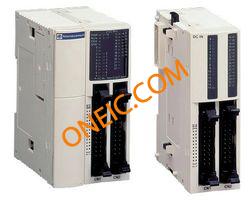TWDLCAA16DRF
Compact programmable logic controller with RS485, 9 inputs, 7 outputs
Manufacturer: ['schneider', 'square', 'telemecanique']
series introduction
# TWDLCAA16DRF Product Series Introduction
## Overview
The TWDLCAA16DRF product series represents a cutting - edge and highly versatile line of industrial automation components. Engineered with precision and innovation, these products are designed to meet the diverse and demanding requirements of modern industrial applications. Whether it's in manufacturing plants, process industries, or other automation - intensive environments, the TWDLCAA16DRF series offers reliable and efficient solutions.
## Key Features
### 1. High - Density Input/Output
One of the standout features of the TWDLCAA16DRF series is its high - density input/output configuration. With 16 channels, it allows for the connection of multiple sensors, actuators, and other peripheral devices. This high - density design enables users to save on panel space and reduce the overall complexity of the control system. For example, in a large - scale manufacturing line where numerous sensors need to be monitored simultaneously, the TWDLCAA16DRF can handle the data collection from these sensors efficiently, streamlining the control process.
### 2. Robust Design
The products in this series are built to withstand harsh industrial environments. They are constructed with high - quality materials that offer excellent resistance to shock, vibration, and temperature variations. This robust design ensures reliable operation even in challenging conditions such as heavy machinery areas, outdoor installations, or environments with high levels of dust and humidity. For instance, in a mining operation where equipment is exposed to constant vibrations and dust, the TWDLCAA16DRF can continue to function without significant performance degradation.
### 3. Fast Response Time
The TWDLCAA16DRF series is equipped with advanced processing technology that enables a fast response time. It can quickly detect changes in input signals and execute corresponding output actions. This is crucial in applications where real - time control is required, such as in automated assembly lines. In an assembly line, the ability to rapidly respond to sensor inputs ensures that the production process runs smoothly and efficiently, minimizing downtime and improving overall productivity.
### 4. Compatibility
These products are designed to be highly compatible with a wide range of industrial control systems and communication protocols. They can easily integrate with existing PLC (Programmable Logic Controller) systems, allowing for seamless expansion and upgrade of the automation infrastructure. Whether it's Modbus, Profibus, or other common industrial communication protocols, the TWDLCAA16DRF series can communicate effectively, providing flexibility in system design and implementation.
### 5. Diagnostic Capabilities
The TWDLCAA16DRF series comes with built - in diagnostic capabilities. It can continuously monitor its own operation and detect any potential faults or malfunctions. This early fault detection feature helps in proactive maintenance, reducing the risk of unexpected system failures. For example, if there is a problem with an input channel, the diagnostic system can quickly identify the issue and provide relevant error codes, enabling maintenance personnel to take prompt corrective actions.
## Applications
### 1. Manufacturing
In the manufacturing industry, the TWDLCAA16DRF series can be used for various tasks such as machine control, quality inspection, and material handling. In a machine tool application, it can control the movement of the cutting tools, monitor the position sensors, and ensure the accuracy of the machining process. In a quality inspection system, it can receive signals from sensors that detect product defects and trigger appropriate actions, such as rejecting defective products.
### 2. Process Industries
For process industries like chemical, pharmaceutical, and food and beverage, the TWDLCAA16DRF series is ideal for process control and monitoring. It can be used to regulate temperature, pressure, flow rate, and other process variables. In a chemical plant, it can control the valves and pumps based on the input from sensors, ensuring the safe and efficient
Images for reference

Image Preview